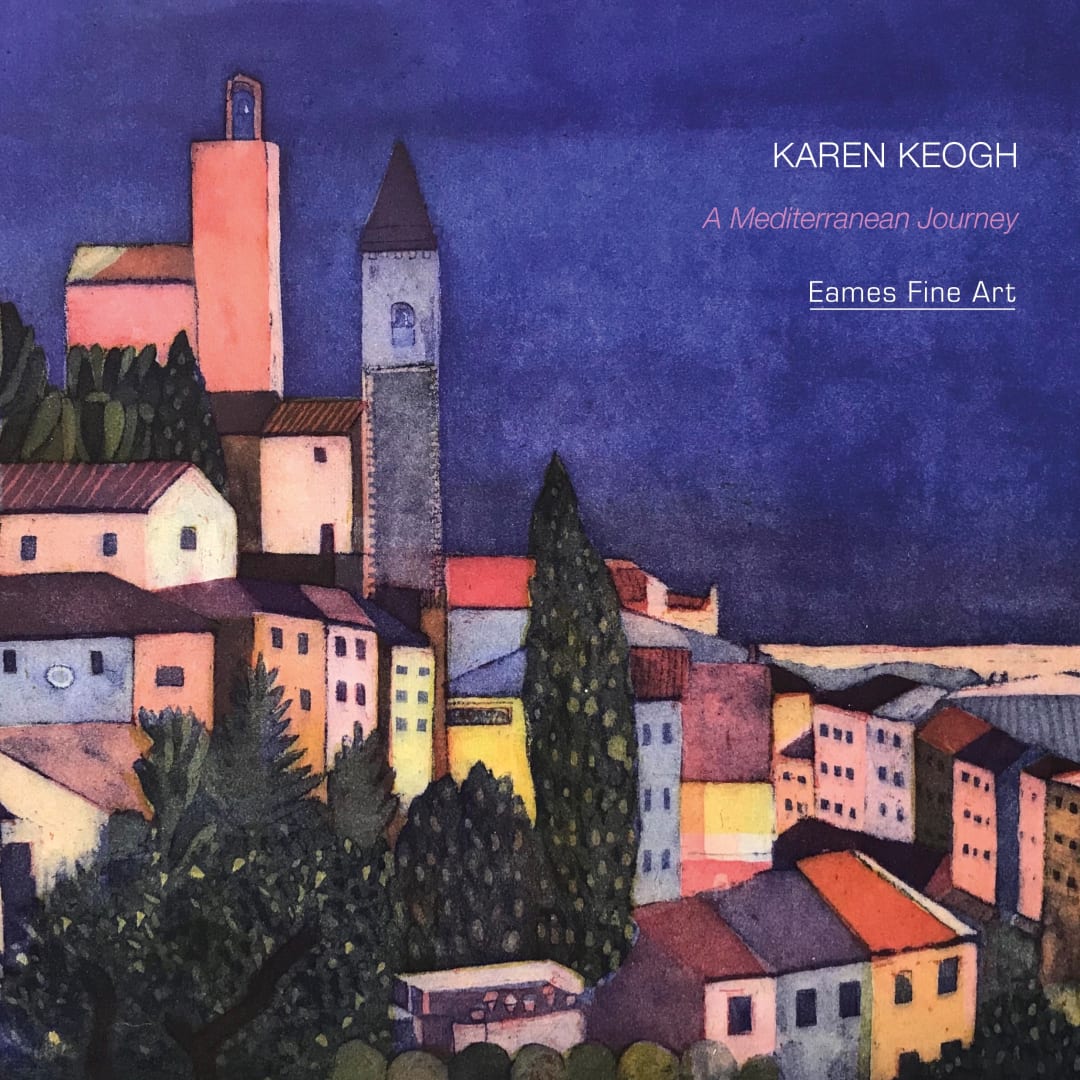You can view the entire catalogue online here for free by clicking on view sample pages - please note there is no hardcopy available for purchase.
Introductory Essay
This exhibition of new etchings and paintings by Karen Keogh adds her unique artistic voice to several subjects that have been preoccupying and exciting European artists throughout history. In her introduction on the next page, she mentions the Fauves, and as she states, there is certainly a discernible Fauvist inspiration in Karen’s palette. This is particularly apparent to me in her Summer Vineyard oil painting and the deep yellow sky in her Southern Sunrise etching. But in addition to this connection with the Fauvist aesthetic, there are two other art historical ties to note.
The rolling hills and naturally vibrant colours of the French countryside, described beautifully in Karen’s new work, are echoed in Paul Cézanne’s Mont Saint-Victoire paintings. Like Karen, Cézanne spent years studying the same scene to truly understand how it changes and how it is steadfast in its colours and its foliage. Like Cézanne, Karen picks and chooses what elements of the landscape to abstract and to depict faithfully. The result in both cases is a highly personal interpretation of beloved vistas.
Karen also has produced a series that explores one of the most vital and fickle tools for plein air painters: light. Like Claude Monet before her, Karen has put together a series that looks at the effects of different times of day on landscape and cityscape. Monet created three famous series exploring light and time of day: twenty-five paintings of haystacks, more than thirty paintings of the Rouen Cathedral, and nineteen depictions of the Houses of Parliament. His series look at how these man-made structures react to light from sunrise to sunset. While Karen’s series depicts different scenes across Tuscany, the exercise is still a useful one for conceptualising the varying emotions and colours that can accompany one’s day while traveling around the Italian countryside, from La Alba (dawn) to Crepusculo (dusk).
Hopefully these comparisons to famous works can help us to appreciate the timelessness of Karen’s newest pieces. But from here it’s best to let Karen describe her experiences of these locales, and the inspirations that she draws from them, in her own words.
Christine Slobogin, July 2020

